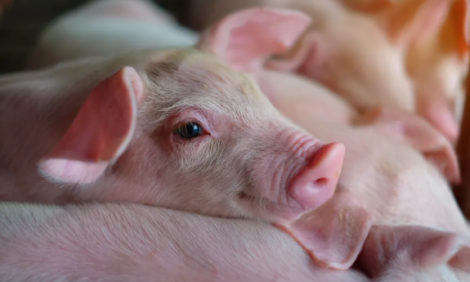



NADIS BPEX Commentary – December 2009 - PRRS
In his latest Commentary, pig veterinarian, Mark White looks at the factors affecting the incidence of the porcine reproductive respiratory syndrome (PRRS), as revealed by the NADIS surveillance programme for PRRS in selected pig herds in the UK.The Yorkshire and Humberside Health Initiative is a programme designed to improve the health of pigs over the long term. Similar programmes are being developed in other parts of the UK.
Phase 1 of the programme is drawing to a close and has involved mapping, preliminary health assignment and stimulating interest. Phase 2, for which funding is awaited, will involve practical steps to improve disease standards. The programme concentrates on two principle ideas:
- Improving general disease control programmes by way of biosecurity improvements, and
- Specific disease control and elimination, which includes PRRS.
It is pertinent, therefore, to examine the results of the last year of health monitoring under the NADIS surveillance programme with respect to PRRS and the results are shown in the graphs.

Compared to the previous year, the total proportion of herds declared as having PRRS present has marginally dropped from 62 per cent to 58 per cent but the difference between North East England and East Anglia remains marked (Figure 1). More than twice the percentage of farms in North East England have PRRS present than those in East Anglia.
Through 2008, only 25 per cent declared use of vaccine for PRRS, whereas in 2009 this has increased to 44 per cent. Interestingly, East Anglia, with its lower proportion of farms infected, seems more willing to vaccinate with 70 per cent of monitored herds using some form of vaccine protection.

Furthermore, it is a little surprising that within herds containing sows, the highest percentage of herds infected is within the breeding-only category (Figure 2). Experience has shown that PRRS virus can die out on a farm where growing pigs are absent and thus there is no reservoir of infection being maintained by the dynamic population.
Within the feeding herd, PRRS appears to be more recognisable in younger pigs, e.g. on nursery-only sites compared to finisher only sites – although the larger the total population, the more likely is PRRS to be present (Figure 3).

PRRS presence is nearly 50 per cent higher on slatted systems compared to straw-based farms – be they breeding or feeding herds (Figure 4). This may simply reflect the regional differences referred to above with historical analysis highlighting the preference for straw use in East Anglia. This observation is, however, somewhat confounded by the figures comparing the presence of PRRS between indoor and outdoor farms, which is similar for both.

Outdoor herds might have been expected to have a lower proportion of farms infected, given that they tend to be found in East Anglia. This may tie in with the higher-than-expected proportion of breeding-only herds being positive.
Finally, as was seen in 2008, there is no material difference between batch and continuous flow farms in proportion of farms reporting presence of PRRS. On this basis, there is little evidence to suggest that batch systems are more successful at keeping free of, or eliminating, PRRS without an active programme to achieve that end. Such might be the aim of the health initiatives now underway.
Further Reading
| - | Find out more information on porcine reproductive respiratory syndrome (PRRS) by clicking here. |
January 2010








